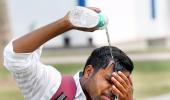It expects rainfall to be about 106 per cent of the long period average, aided by La Niña conditions anticipated to play a role in the second half of the monsoon season.

The India Meteorological Department has made a forecast for the highest precipitation in nearly two decades.
It expects rainfall to be about 106 per cent of the long period average (LPA), aided by La Niña conditions anticipated to play a role in the second half of the monsoon season.
La Niña is a weather phenomenon which results in stronger trade winds and typically results in heavier rainfall in India.
Data since the 1950s shows abundant rainfall on most previous occasions, the highest in 1988, when it was 121 per cent of the LPA (charts 1, 2).


Actual rainfall has often exceeded the weather department's estimates in recent years, but spatial distribution has varied.
Many regions have got significantly less than normal rains, while others have seen excess (chart 3).

The strong forecast is positive for the agriculture sector.
The second advance estimate shows lower foodgrain production in the latest season, partly because of a patchy monsoon last year (chart 4).

Much of the country's farmland is dependent on rainfall.
The share of gross irrigated area as a percentage of gross cropped area was around 55 per cent in 2021-2022, according to the latest available data.
Adequate rains will also boost reservoir water levels.
The central, western, southern and northern regions have lower levels than last year. The eastern region is better off, though only marginally (chart 5).

India has less water available on a per capita basis now than in previous decades. The per capita annual water availability was 5,178 cubic metres in 1951. This fell to 2,210 cubic metres in 1991.
The threshold for water-stressed conditions is 1,700 cubic metres per year per person.
India is expected to have 1,367 cubic metres by 2031 (chart 6).

Feature Presentation: Ashish Narsale/Rediff.com











